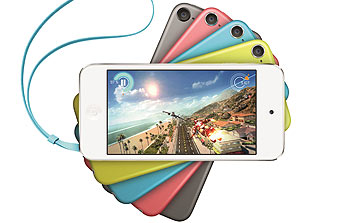 The entry-level iPod Touch gets a price cut and a feature boost for the summer.
The entry-level iPod Touch gets a price cut and a feature boost for the summer.
Apple may have been pretty quiet this year when it comes to launching killer new products and reminding people why the company is considered one of the world’s most innovative. But it has been busy improving its existing devices and making them more desirable and accessible to consumers.
In April it upgraded the processors and cut the prices of its MacBook Air ultra-lightweight notebooks and at the beginning of June launched a new entry-level iMac all in one desktop which offers the same quality and design of the existing range but with a slightly less potent Intel chipset and a price tag that’s also $300 lighter.
And now, it’s at it again. The entry-level 16GB iPod touch, which the company launched 12 months ago for $229, is now $30 cheaper, yet has been upgraded so that it gets the same rear-facing 5-megapixel rear-facing iSight camera found on its more expensive siblings (until now, it only had a front-facing camera for video calling) and is also available in the same range of bright colors.
The new device goes on sale in the US today and is expected to start appearing on other country-specific Apple websites over the coming hours.
And despite costing $100 less than the 32GB model, the new 16GB iPod Touch boasts the same high definition retina display, the same processor and of course access to the App Store and over 1 million apps.
Although it was once Apple’s halo product and the device that bought the company back from the brink of extinction, the iPod is not the powerhouse it used to be, and some experts believe that it will soon be dropped from Apple’s product range altogether.
The iPod Touch hasn’t had a full refresh since 2012 and the current model is based on the same chassis and chipset as the iPhone 5. However, for parents that want to keep in contact with their children but are worried about them running up phone bills or eating through data allowances, the touchscreen device is a very good alternative to a smartphone for messaging, using apps, surfing the web and making video calls — wi-fi access permitting, of course
source:AFP








